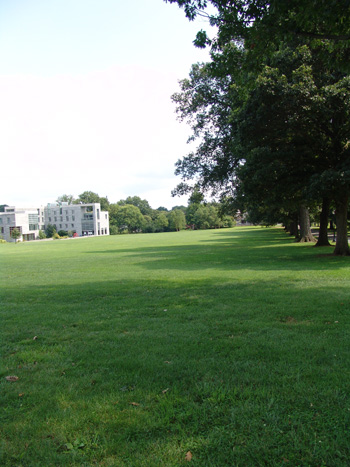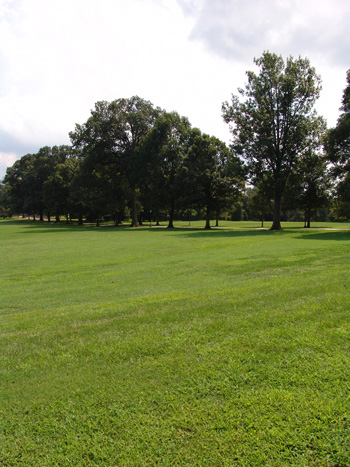Organic Lawn: One Year Later
 Recently Nicole Selby, our gardener leading the organic lawn effort, interviewed with local garden reporter Virginia Smith of the Philadelphia Inquirer. Nicole discussed upon our philosophy, efforts, and challenges to date.
Recently Nicole Selby, our gardener leading the organic lawn effort, interviewed with local garden reporter Virginia Smith of the Philadelphia Inquirer. Nicole discussed upon our philosophy, efforts, and challenges to date.

Organic lawn during the wet month of August. photo credit: L. Stiebitz
How is it working? The 2011 growing season has been extreme from hot and dry to wet and soaked. At the moment, though, the conventional and organic lawns all look the same – green.
Learn more about the organic lawn in these past posts.
Announcing the Organic Lawn Brochure and Blossoming Research Effort
Remediating Compaction on our Organic Lawn





Gian-Angelo Gallace
Posted at 16:34h, 29 AugustHow has the lawn fared in the heat of the summer of 2012?
Nicole Selby
Posted at 13:49h, 03 SeptemberThe organic lawn took a noticeable dip toward dormancy over the scorching Fourth of July weekend, and it brightened up to green again with those August rains. Both basically matched the performance of our conventional lawns. We do hope to achieve even better drought tolerance, in time. One step toward that end is coming soon: In September, we’ll topdress with a 1/4″ layer of compost. Over the years, repeating this process will increase the organic matter in the soil substantially. As with any garden bed, that is a great way to retain moisture. On turf, you have to build up slowly so you don’t smother the established plants.
Eric Richardson
Posted at 10:22h, 10 DecemberWhat practices if any do you use to control broadleaf weeds in this particular plot of turfgrass?
Thanks,
Eric
Nicole Selby
Posted at 07:52h, 16 DecemberMy best weapon against broadleaf weeds is probably overseeding, meaning planting grass seed right into the established lawn anywhere it’s thin. If sunlight can’t hit the bare soil where the seed bank is waiting, there is very little weed seed germination.
We combat established weeds like plantain, dandelion and smartweed pretty well by pulling or digging. We immediately fill in the space with grass seed, and address underlying cultural issues like compaction or organic matter deficiencies, or else weeds will move back in.
White clover is unfeasible to eradicate because of its stoloniferous nature, plus it’s nice to have some for its contributions to fertility and its flowers. But to prevent it from dominating the desired grass, the keys are the same as above– overseeding and fixing cultural conditions.